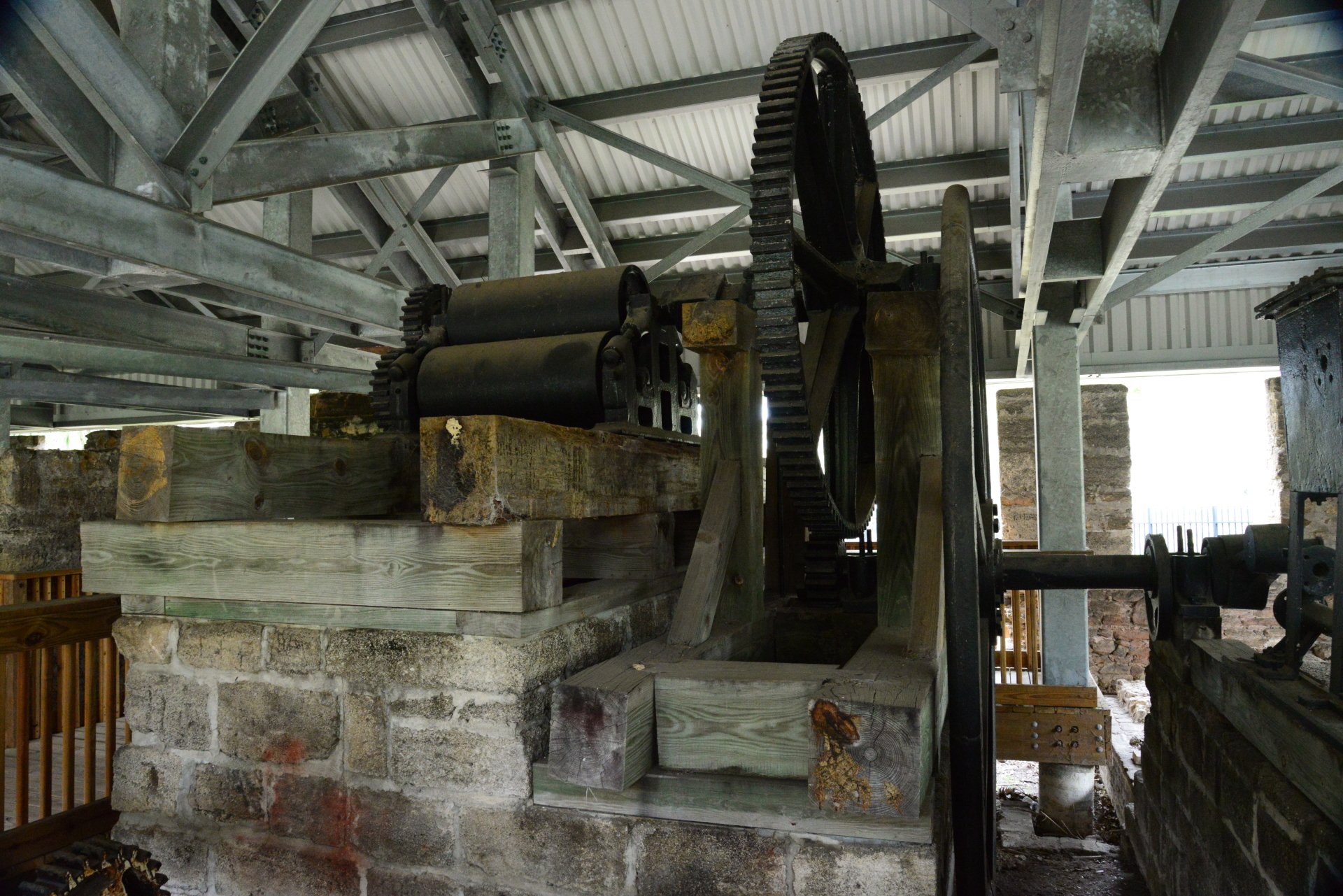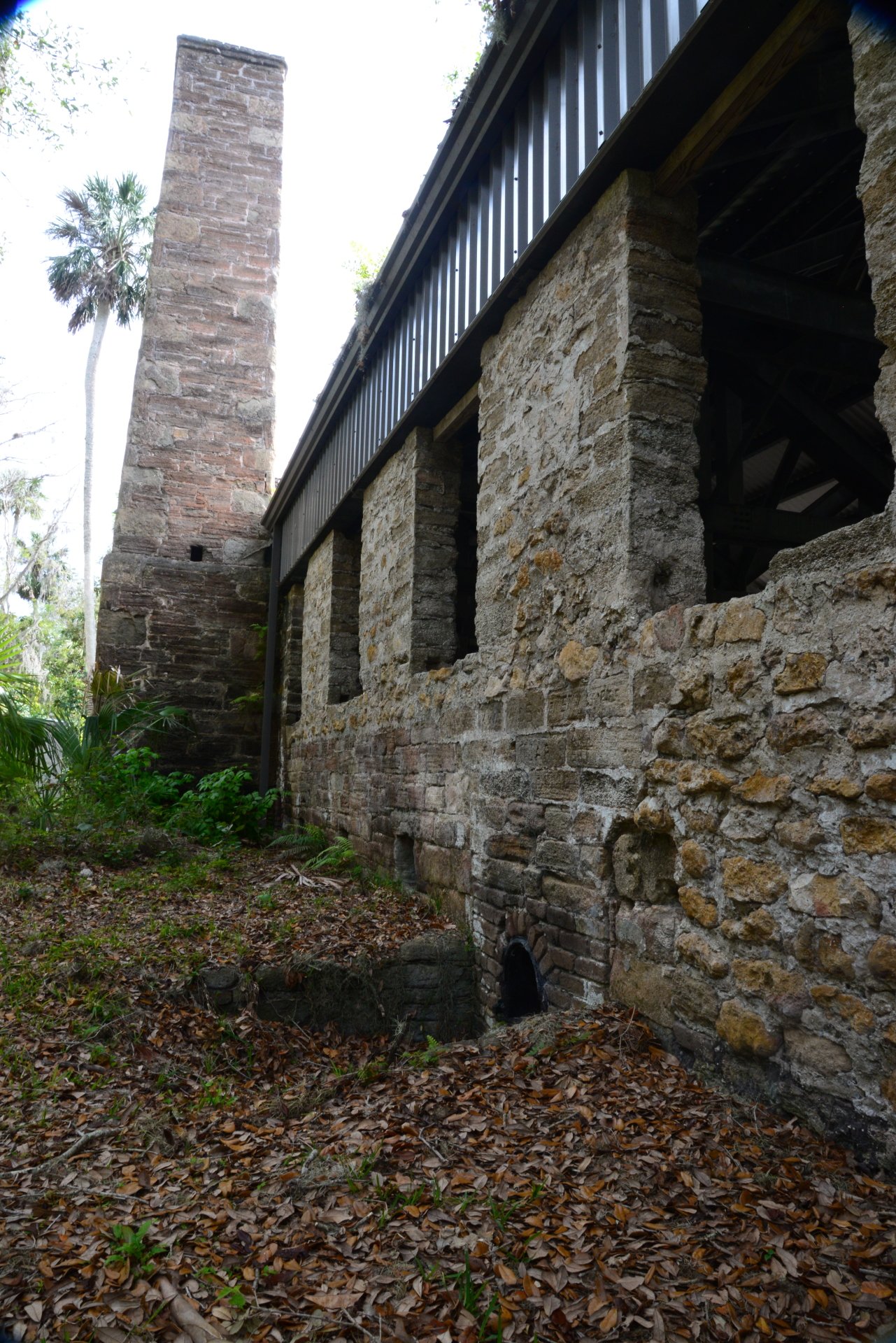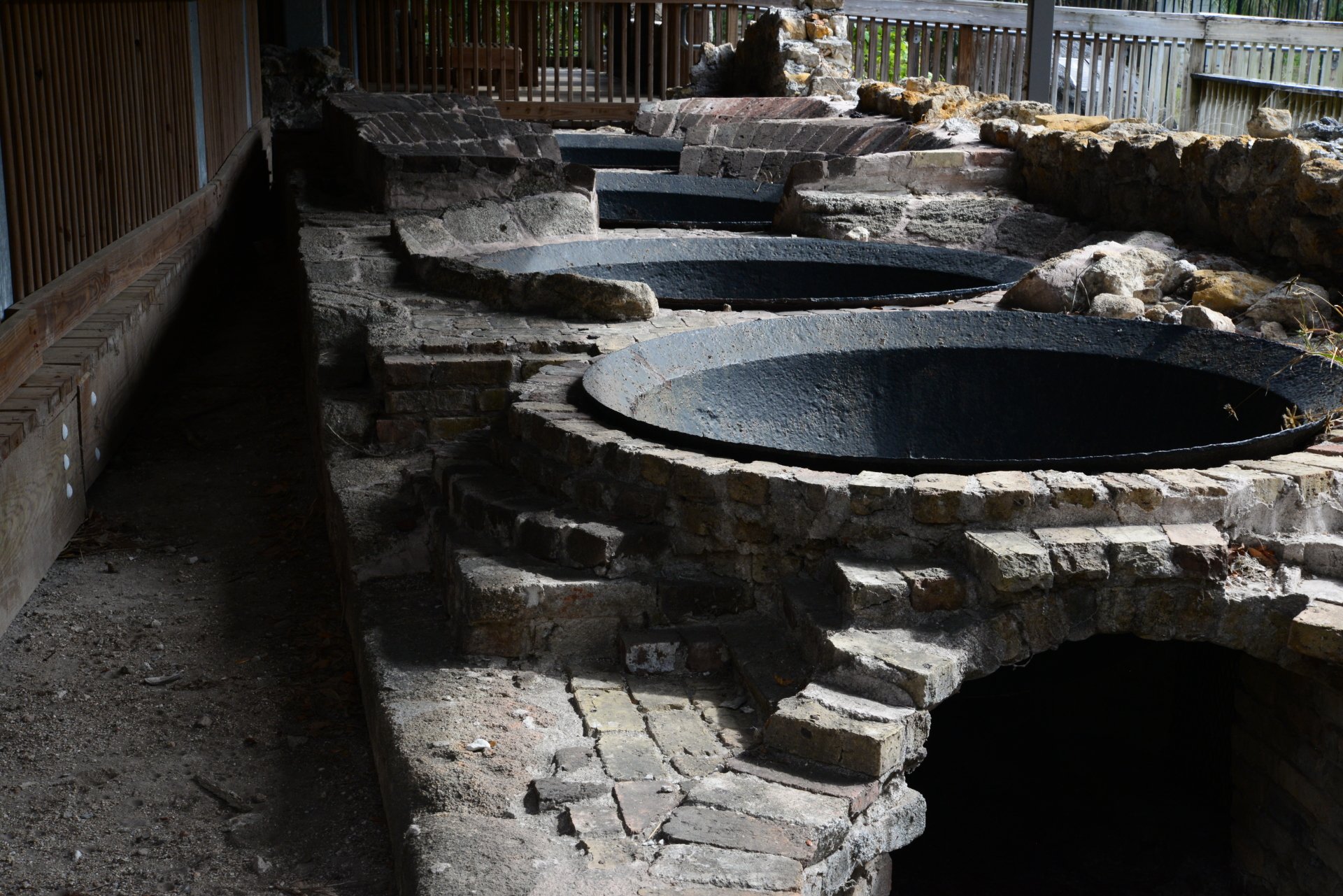
Dunlawton Sugar Mill
The Dunlawton Plantation origin dates back to August 31, 1804 when Patrick Dean, an immigrant from the Bahamas, received a land grant of 995 acres. At the same time, John Bunch, Dean's uncle and a planter from the Bahamas also received a grant for land adjacent and just to the north of Dean's. After Dean was murdered, it is unknown if by and indian or a slave in 1818, the plantation passed on to his aunt Cecily who was married to John Bunch. During the short time the plantation was owned by Cecily, since she appeared to have died not too long after Dean, the plantation did not operate and was described as abandoned.
In her will, Cecily left the plantation to her grandson John Bonnemaison Bunch McHardy only after the death of her brother John Bunch. After Cecily's death, John operated both plantations as one until his death in 1830. Shortly thereafter and as requested by Cecily in her will, John B. Bunch McHardy inherited the plantation. However, John B. Bunch McHardy was an Officer in the British Navy and had no interest in the property. On May 3rd 1832 he sold the plantation to Joseph and Charles Lawton of Charleston, SC for $3,000. In 1832 the Lawton's sold the plantation to Sarah Petty Dunn-Anderson for $4,500. Her sons, James and George Anderson improved the structures and operated the plantation for only 3 years until the onset of the Second Seminole War, in which the Dunlawton Plantation figured prominently but at the end was burned down and destroyed.
After the war, the Anderson's abandoned the property until they sold it to South Carolinian John F. Marshall on September 18, 1846 for $8,000. Marshall made a last attempt to re-establish the sugar plantation by installing the machinery from the nearby Cruger-dePeyster mill which was destroyed during the war. In 1852 Marshall sold the plantation to Charles P. Vaux also from Charleston but due to unpaid debt it reverted back to Marshall in 1855. By 1853 Marshall's failure to operate the plantation profitably signaled the effective demise of Dunlawton Plantation which was again burned down in 1856 during the Third Seminole Indian War (1855-1858). This marked the end of Dunlawton Plantation's involvement in the financial and political history of East Florida.
After the Civil War, in 1871 Marshall sold Dunlawton Plantation to William Dougherty, a lawyer and politician but not a farmer who divided and sold most of the land. After Dougherty's death, the plantation was inherited by his son Charles and after Charles death it passed on to his niece Mrs. Austin Smith who sold it to H. B. Simmons. By 1890 whatever land remained of the original the plantation and the sugar factory was abandoned.
Prominent Daytona Beach businessman Joseph Saxton Lloyd (1907-1991) owned Dunlawton after the Dougherty's family tenure. Ca. 1939 Lloyd leased the land to Dr. Perry Sperber, a physician from Daytona Beach who created Bongoland, one of the first theme parks in Florida. The theme park was not successful and closed down in the 1950's. Ten acres of the original 995 of the Dunlawton Plantation including the factory building were donated by Saxton in 1963 to Volusia County. The donated land and structures are currently owned by Volusia County and operated as Sugar Mill Gardens by the non-profit Botanical Gardens of Volusia, Inc.
Remains of the sugar mill include structural ruins of coquina block and brick, and an assortment of sugar processing equipment which includes the gear mechanisms of the rolling sugar cane press, the iron boiling kettles, and the steam furnace and piston mechanisms used in operating the cane press. All or part of the equipment here used to belong to the Cruger-dePeyster Sugar Mill. This remaining equipment represents one-of the first still existing examples of the types of machinery required in the processing of sugar, molasses, and rum.
The Dunalwton remains are located at 950 Old Sugar Mill Road and were listed in the National Register of Historic Places in 1973.





















